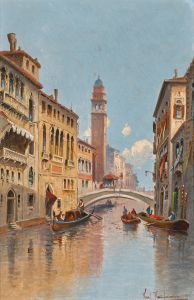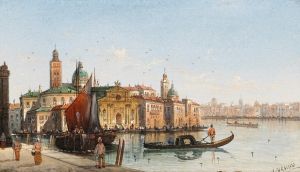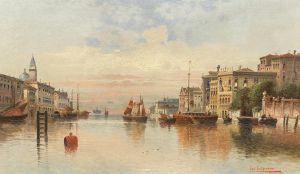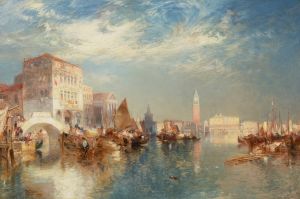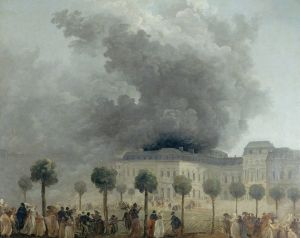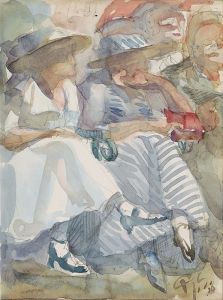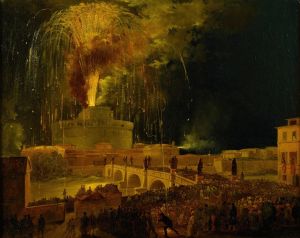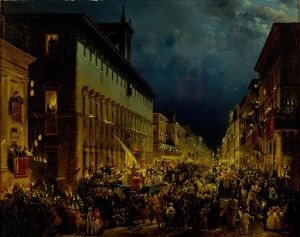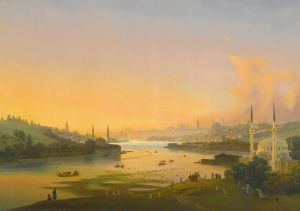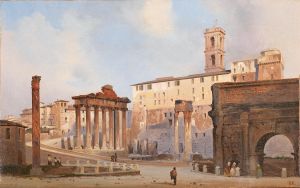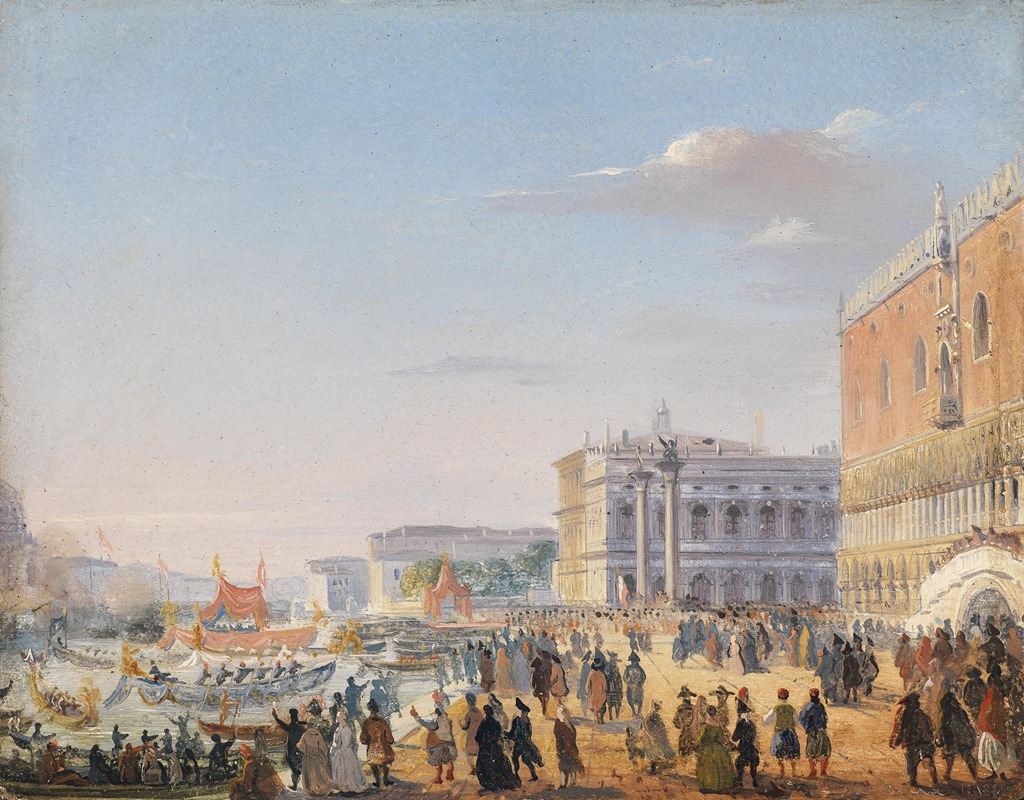
Ankunft Franz Joseph und Elisabeth in Venedig
A hand-painted replica of Ippolito Caffi’s masterpiece Ankunft Franz Joseph und Elisabeth in Venedig, meticulously crafted by professional artists to capture the true essence of the original. Each piece is created with museum-quality canvas and rare mineral pigments, carefully painted by experienced artists with delicate brushstrokes and rich, layered colors to perfectly recreate the texture of the original artwork. Unlike machine-printed reproductions, this hand-painted version brings the painting to life, infused with the artist’s emotions and skill in every stroke. Whether for personal collection or home decoration, it instantly elevates the artistic atmosphere of any space.
Ippolito Caffi was an Italian painter known for his vivid and atmospheric depictions of urban landscapes and historical events. One of his notable works is "Ankunft Franz Joseph und Elisabeth in Venedig," which translates to "Arrival of Franz Joseph and Elisabeth in Venice." This painting captures a significant historical moment, showcasing Caffi's skill in rendering both architectural detail and the vibrancy of public celebrations.
The painting depicts the arrival of Emperor Franz Joseph I of Austria and Empress Elisabeth, often referred to as "Sisi," in Venice. This event took place during the mid-19th century when Venice was part of the Austrian Empire. The visit of the imperial couple was a momentous occasion, marked by grand festivities and public gatherings, which Caffi masterfully captured in his work.
Caffi's painting is characterized by its meticulous attention to detail and the dynamic composition that brings the scene to life. The artist was known for his ability to convey the atmosphere of a place, and in this work, he effectively portrays the excitement and grandeur of the imperial visit. The painting likely features the bustling canals of Venice, adorned with festive decorations, and the lively crowds that gathered to witness the arrival of the emperor and empress.
Ippolito Caffi was born in Belluno, Italy, in 1809 and developed a passion for art at an early age. He studied at the Academy of Fine Arts in Venice, where he honed his skills in landscape and veduta painting—a genre focused on detailed cityscapes. Caffi's work is often associated with the vedutisti tradition, which emphasizes precise representation of architectural and urban scenes.
Throughout his career, Caffi traveled extensively, capturing scenes from various cities across Europe and the Middle East. His travels enriched his artistic repertoire and allowed him to experiment with different lighting and atmospheric effects, which became a hallmark of his style. Caffi's ability to depict the interplay of light and shadow, as well as his keen observation of architectural forms, is evident in "Ankunft Franz Joseph und Elisabeth in Venedig."
The painting not only serves as a historical record of a significant event but also reflects the political and cultural climate of the time. Venice, under Austrian rule, was a city of strategic importance, and the visit of the imperial couple was a demonstration of the empire's influence and power. Caffi's work captures this duality, presenting both the celebratory aspect of the visit and the underlying political context.
Ippolito Caffi's contributions to art were recognized during his lifetime, but his career was cut short when he died in 1866 during the Battle of Lissa, a naval engagement in the Austro-Prussian War. Despite his untimely death, Caffi left behind a rich legacy of paintings that continue to be appreciated for their historical significance and artistic merit.
"Ankunft Franz Joseph und Elisabeth in Venedig" remains an important work within Caffi's oeuvre, exemplifying his talent for capturing the essence of a moment in time. The painting is a testament to his skill as an artist and his ability to convey the grandeur and complexity of historical events through his art.





